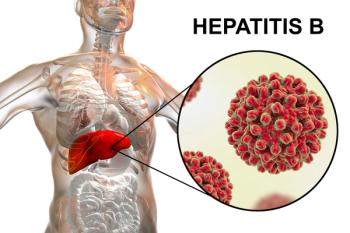
Abuse-Deterrent Opioid Rexista Makes Misusers Blue-Literally
How one opioid abuse deterrent could make it easy to identify misuse.
Update 9/25
The FDA announced that it is denying Intellipharmaceutics approval on its drug Rexista. According to a
The move comes after an FDA advisory commitee
The agency also rejected the name Rexista for the drug, and is asking Intellipharmaceutics to submit alternate names for the drug, now simply referred to as Oxycodone ER. The company has one year to answer the FDA's requests.
Original article follows
Taken as prescribed, Rexista Oxycodone XR acts like other pain-easing medications. But try to crush the tablets in order to snort the medication or dissolve them in liquid for injecting and the result will be a blue, sticky, viscous gel that is difficult to handle.
The opioid analgesic, which the FDA is considering for approval, is like several others already on the market that have difficult-to-use properties if they are manipulated improperly. But the blue dye in the extended-release tablet is something new, said Isa Odidi, PhD, CEO and Co-Chief Scientist of
“The purpose of the blue dye is to provide an early warning system,” Odidi said. “The moment you try to chew it, it creates this intense blue color in the mouth.”
That, he said, creates “the ability to see quickly if someone is trying to abuse the product.”
What’s more, alcohol does not change Rexista’s release of the drug, Intellipharmaceutics said. That prevents “dose dumping,” or using alcohol to amplify its effect. Odidi added that Rexista has an advantage over similar opioid products because it has been shown to have no “food effect,” and can be taken with or without meals.
Abuse-deterrent opioids
Rexista is intended for the continuous management of moderate to severe pain. If approved, it will join a growing list of opioid formulations aimed at curbing opioid abuse, an epidemic that kills 91 Americans each day, according for the CDC. The FDA encourages the development and advancement of abuse-deterrent opioids as part of its overall Opioid Action Plan.
“The FDA looks forward to a future in which most or all opioid medications are available in formulations that are less susceptible to abuse than the formulations that lack abuse-deterrent properties,” the agency says on its website. The FDA agency lists 10 opioids that are permitted to carry the “abuse deterrent” label.
These drugs use various methods to curb abuse, such as additives that make the drugs unpleasant to chew or snort. With Rexista, the gel is formed by a polymer that activates when crushed and exposed to liquid or moisture.
Odidi said he hopes the blue coloration strategy will “introduce a new standard” to the industry. It can be especially effective in alerting people to first-time abusers or those who know little about opioids, he said.
Is blue enough?
However, Stephen Hoag, PhD, Professor of Pharmacy Science at the University of Maryland School of Pharmacy, said serious drug addicts would not likely be hindered by the blue coloration. But he agreed that the presence of the dye could make it more difficult for casual users to abuse the drug without being noticed.
“If a kid has blue all over his face, that would be very useful information for the parents,” he said.
Michael Smith, PharmD, BCPS, Clinical Assistant Professor in the Department of Clinical Pharmacy at the University of Michigan College of Pharmacy, said the blue dye may have a limited effect.
“I don’t know how effective it will end up being,” he said. “I think it will stop some people from abusing it, but it certainly won’t stop everybody.”
Up next: Troubles ahead for the new drug
Clinical trials showed that Rexista is essentially as effective as OxyContin by
Indeed, Purdue Pharma argues that the drugs are too similar. In April, Purdue sued Intellipharmaceutics in U.S. District Court for the District of Delaware, claiming that the Canadian company infringed on six patents with Rexista, Intellipharmaceutics announced.
While the FDA was expected to rule on the Rexista application by September 2017, the legal move stays the FDA from granting approval for 30 months, unless Intellipharmaceutics prevails in court or a settlement is reached.
Odidi described the lawsuit as part of the “normal course of business.”
“We think it’s frivolous, we will fight it vigorously and we expect to prevail,” he said.
A Purdue spokesman did not return a call from Drug Topics.
Smith said the FDA is collecting information on the effect that abuse-deterrent drugs have on the number of people abusing opioids overall. He pointed to research suggesting that the introduction of abuse-deterrent OxyContin led abusers to migrate to other drugs, including heroin.
The FDA requires drug companies “with product labels boasting abuse-deterrent properties … to conduct postmarket studies to determine the impact that [abuse-deterrent] technologies are having in practice,” the agency’s website says. “Having that information is critical, and will allow us to take the next important steps in this area.”
Newsletter
Pharmacy practice is always changing. Stay ahead of the curve with the Drug Topics newsletter and get the latest drug information, industry trends, and patient care tips.











































































































































































































